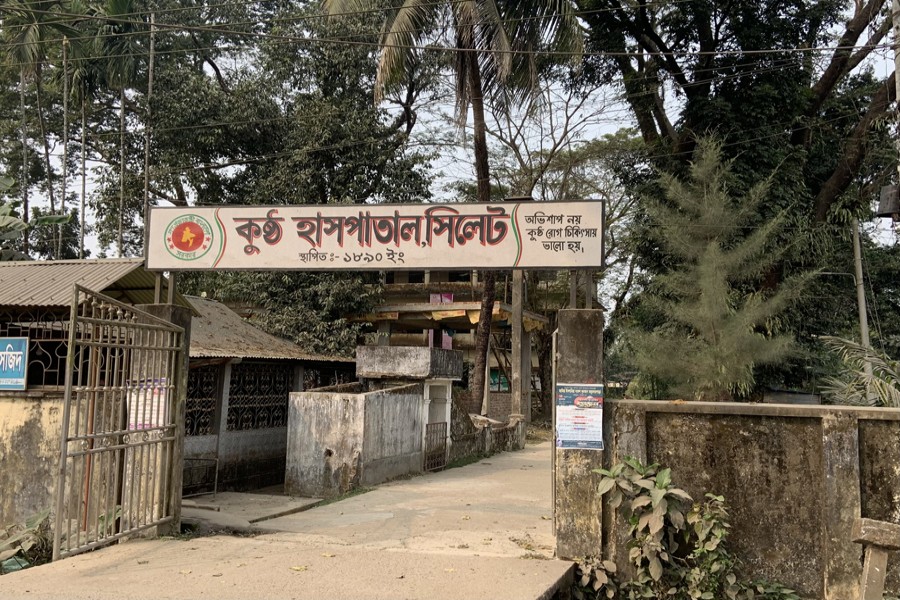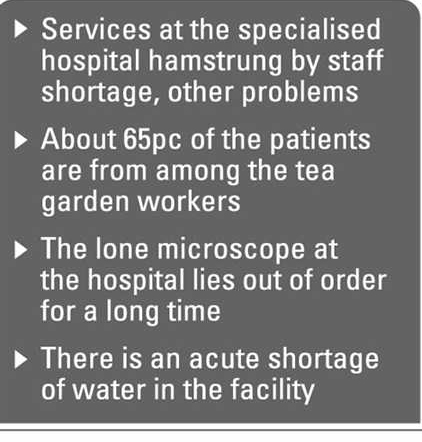
Leprosy incidence high in Sylhet div despite eradication efforts
Friday, 2 February 2024

OUR CORRESPONDENT
SYLHET, Feb 01: Sylhet has been marked as a region with an increased incidence of leprosy, a chronic infectious disease, despite the government having a massive programme with a target to eradicate it by the year 2030.
The programme from the state side could not progress at the desired level here as the services at the specialised hospital for the disease in the division named Sylhet Leprosy Hospital is hamstrung by staff shortage and other problems.
Official sources said there are at least 530 leprosy patients in Sylhet division including highest 230 in Moulvibazar, 180 in Sylhet, 117 in Habiganj and 3 in Sunamganj.
Highest in last 5 years, 79 patients were detected in Sylhet only in the last one year, sources said, adding the number is on the rise.

Civil Surgeon Manisor Chowdhury of Sylhet told this correspondent that as many as 168 leprosy patients, including 14 children, were detected in the district in 2023.
The government has taken up a massive programme to eradicate leprosy from the country by 2030, the civil surgeon said.
With a view to achieving the goal, various organisations are already involved in leprosy eradication activities, he added.
A non-government organisation named Lepra, Bangladesh has been giving dedicated services to the leprosy patients.
However, located in the city's Sheikhghat area, the Sylhet Leprosy Hospital, one of the three such in the country, has been grappling with staff shortage and other problems for a long time, said the Civil Surgeon.
The hospital authorities find it very much difficult to treat the patients from the entire region, he claimed.
Although the government-run specialised hospital is an 80-bed facility, there are 48 beds in its three wards.
Approximately 15 patients from various areas of the division come to the hospital for leprosy treatment every day. There are 46 patients admitted here at present.
About 65 per cent of the patients are from among the tea garden workers, officials said.
Normally, a majority of the leprosy patients are detected from among the low-income group.
All the five posts of staff nurses in the hospital had been lying vacant for a long time while nine posts of office assistants are also vacant.
The post of shoe-maker for the patients has been lying vacant since 2019.
As the patients need some special type of shoe, it is there for them.
The lone microscope at the hospital has been lying out of order for a long time while water shortage in the facility is a common phenomenon.
There is a lack of awareness among the tea garden workers. Besides, the dirty atmosphere alongside poor food intake is some of the reasons for prevalence of the disease.
Early detection and proper treatment can cure the patients. However, absence of timely treatment can result in a patient's disability.
The authorities requested the Divisional Director of Health to solve the water supply problem, but to no effect as yet.
Hiluachhara Tea Garden worker Khudiram Munda, 70, said that he took long treatment and recovered recently.
His daughter Minoti Munda also got well after taking a long treatment at the leprosy hospital.
Health officials said leprosy is a chronic bacterial infection that primarily affects skin, nerves, and respiratory tract. It can lead to skin sores, nerve damage and loss of limbs.
Despite various efforts, poor working environment, lack of sanitation, poor quality of food, and low income remain significant obstacles in the fight against the disease.
forsylhet@gmail.com